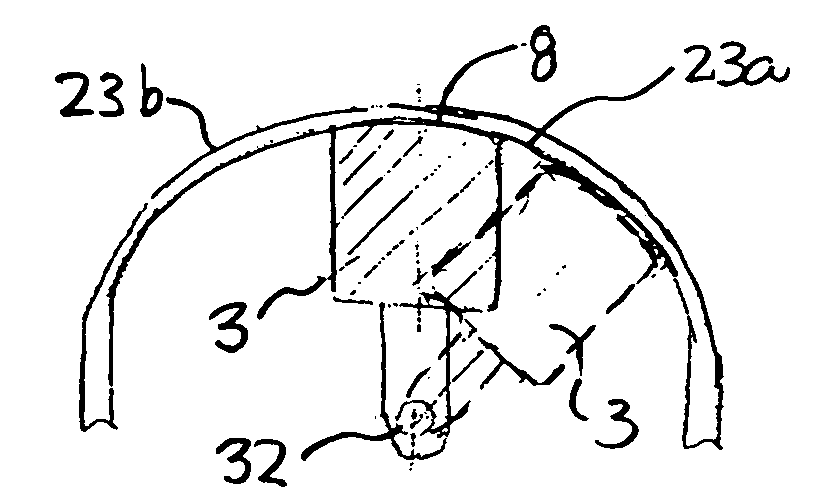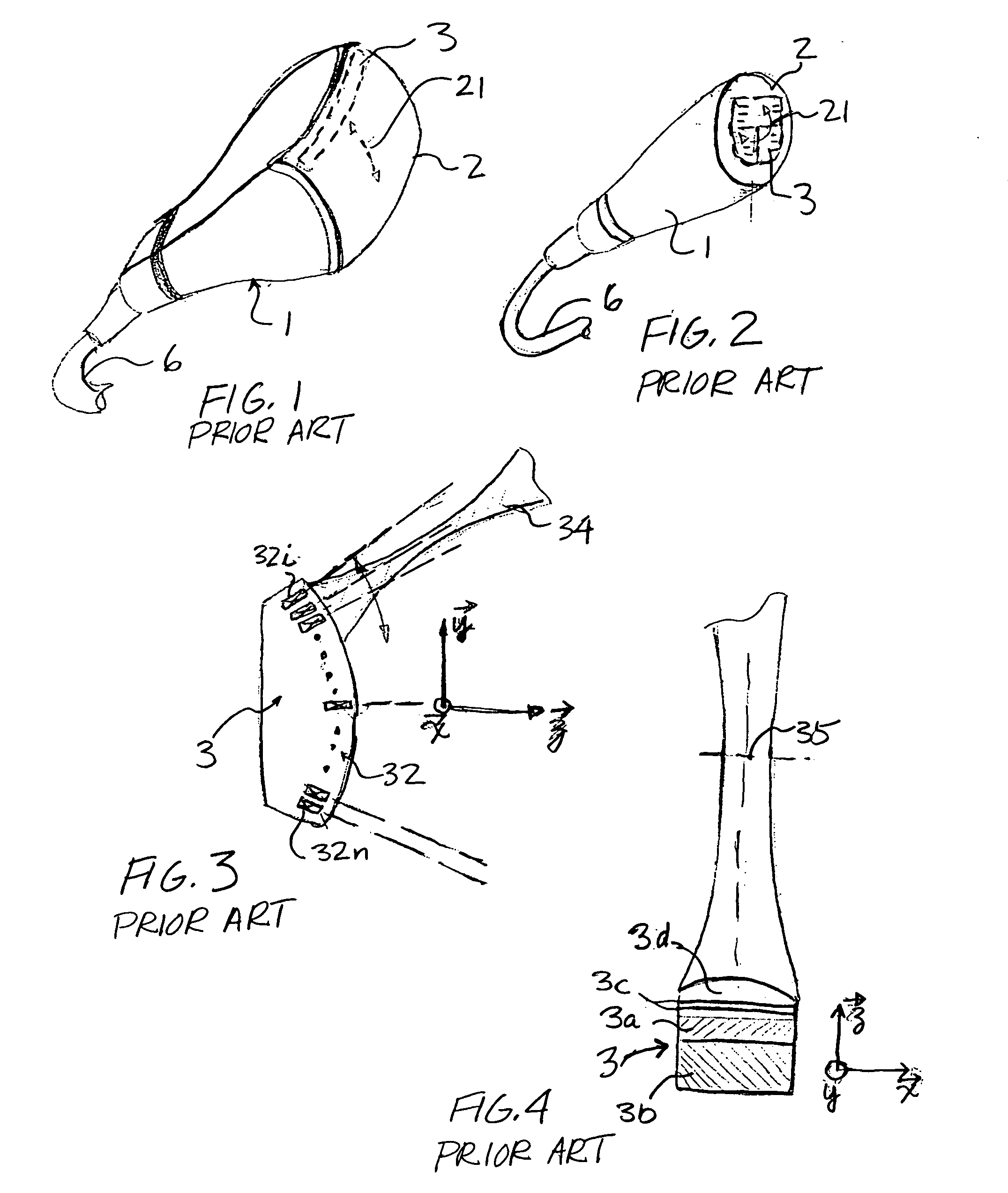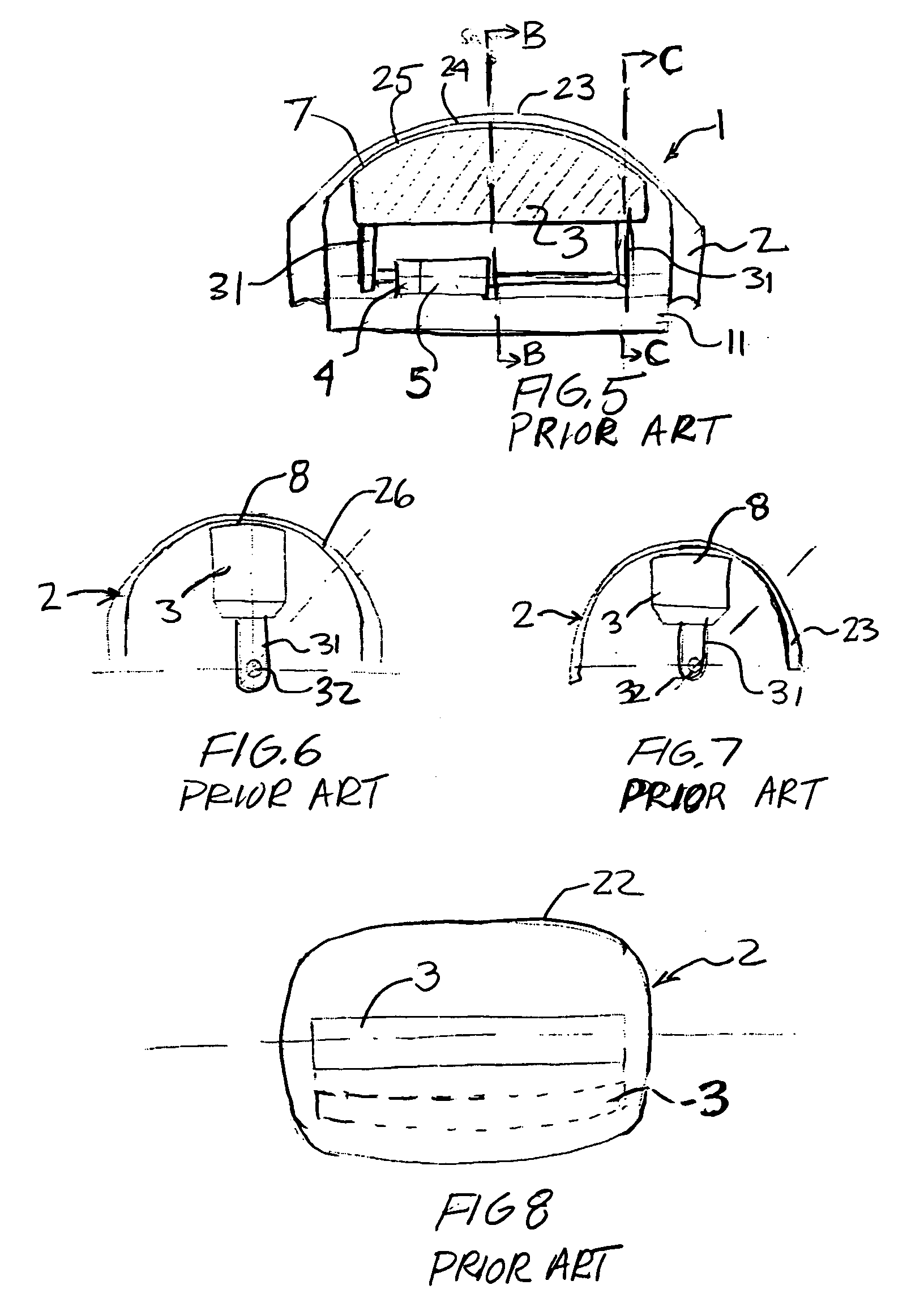Array transducer for 3D tilting probes
a technology of array transducer and tilting probe, which is applied in the field of construction and manufacturing of ultrasonic 3d probes, can solve the problems of reducing the quality of system, affecting the operation of the system, and affecting the quality of the system,
- Summary
- Abstract
- Description
- Claims
- Application Information
AI Technical Summary
Benefits of technology
Problems solved by technology
Method used
Image
Examples
Embodiment Construction
[0074] As illustrated by the prior art discussed above, three dimensional hybrid probes for medical diagnostic use have been developed and described. However, all prior art devices are affected with similar shortcomings that limit their widespread commercial use. FIG. 1 illustrates an ultrasonic hybrid probe 1 equipped with a swinging / tilting curved array transducer 3 disposed underneath the front shell 2 of the probe 1. The transducer 3 is conventionally caused to rotate or swing in a coupling liquid bath so that acoustic energy is emitted from, and received through, the front shell 2. Transducer 3 conventionally comprises a plurality of elementary vibrators uniformly disposed along the azimuth axis thereof to provide electronic scanning of images. Probe 1 also comprises an internal mechanism (not shown) that carries transducer 3, and a motorization means (not shown), i.e., an electric motor drive, for providing swinging of the transducer. The transducer 3 is secured to the interna...
PUM
 Login to View More
Login to View More Abstract
Description
Claims
Application Information
 Login to View More
Login to View More - R&D
- Intellectual Property
- Life Sciences
- Materials
- Tech Scout
- Unparalleled Data Quality
- Higher Quality Content
- 60% Fewer Hallucinations
Browse by: Latest US Patents, China's latest patents, Technical Efficacy Thesaurus, Application Domain, Technology Topic, Popular Technical Reports.
© 2025 PatSnap. All rights reserved.Legal|Privacy policy|Modern Slavery Act Transparency Statement|Sitemap|About US| Contact US: help@patsnap.com



